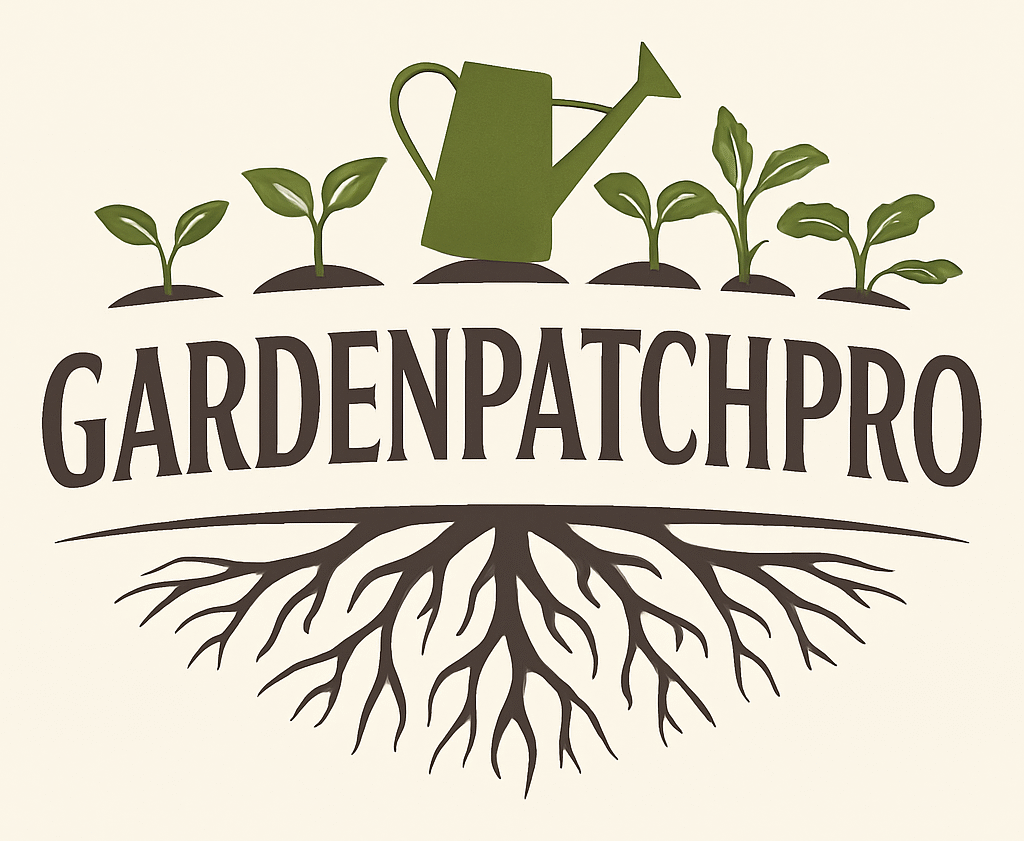8 Moon Gates Design Ideas for Modern Landscapes
Moon gates are circular openings that add a unique architectural element to gardens and outdoor spaces. They have a long history, especially in Chinese garden design, where they serve as both decorative features and symbolic entrances. People often use moon gates to create focal points and charming passages in their landscapes.
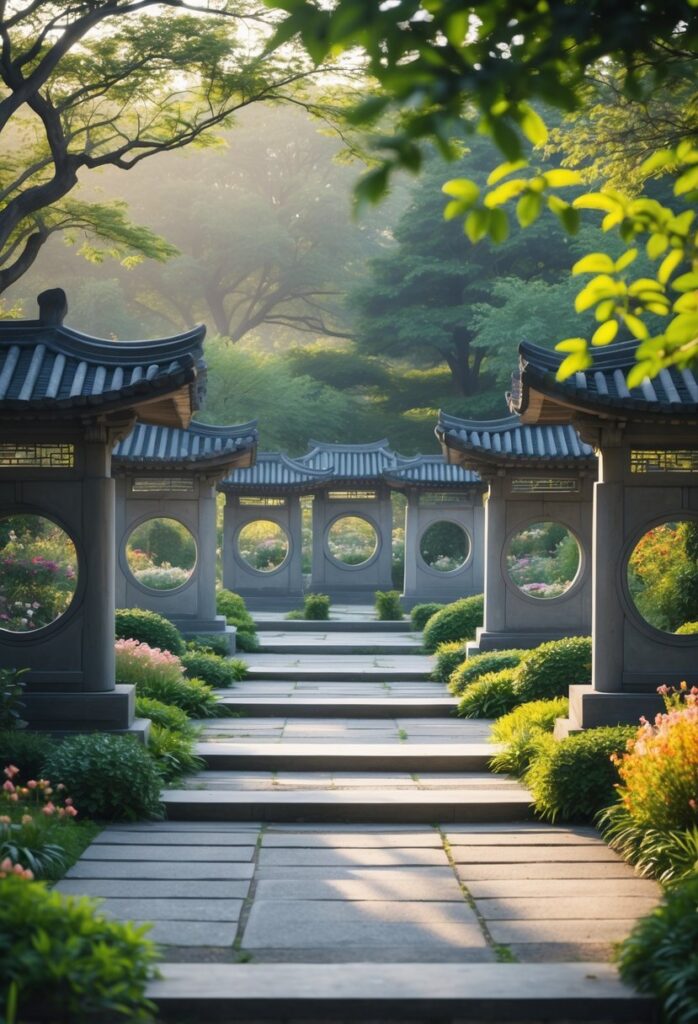
They offer a blend of beauty and function, framing views and enhancing the overall garden experience. Many gardeners appreciate moon gates for their ability to divide spaces softly while inviting curiosity and exploration. This article explores eight different moon gates, showing how they can fit into various outdoor settings.
1) Traditional Chinese Moon Gate Design

Traditional Chinese moon gates are circular openings set into garden walls. They act as doorways that connect one garden area to another. The round shape represents the full moon, symbolizing harmony and unity in Chinese culture.
These gates often feature detailed craftsmanship. They may include ornate carvings, lattice work, and symbolic motifs. Their design balances beauty and function, creating an inviting passage while enhancing the garden’s aesthetic.
Moon gates first appeared in ancient Chinese imperial gardens. Nobles used them to frame views of ponds, rocks, or pavilions. This framing technique guides visitors’ eyes and creates a sense of mystery and discovery.
The shape also optimizes views of the moon, important in Chinese tradition. The tile designs and roof shapes carry deeper meanings, such as protection and seasonal cycles. Traditional moon gates remain a key feature in classical Chinese garden design.
Learn more about the symbolism and functionality of moon gates.
2) Stone Moon Gates for Serenity
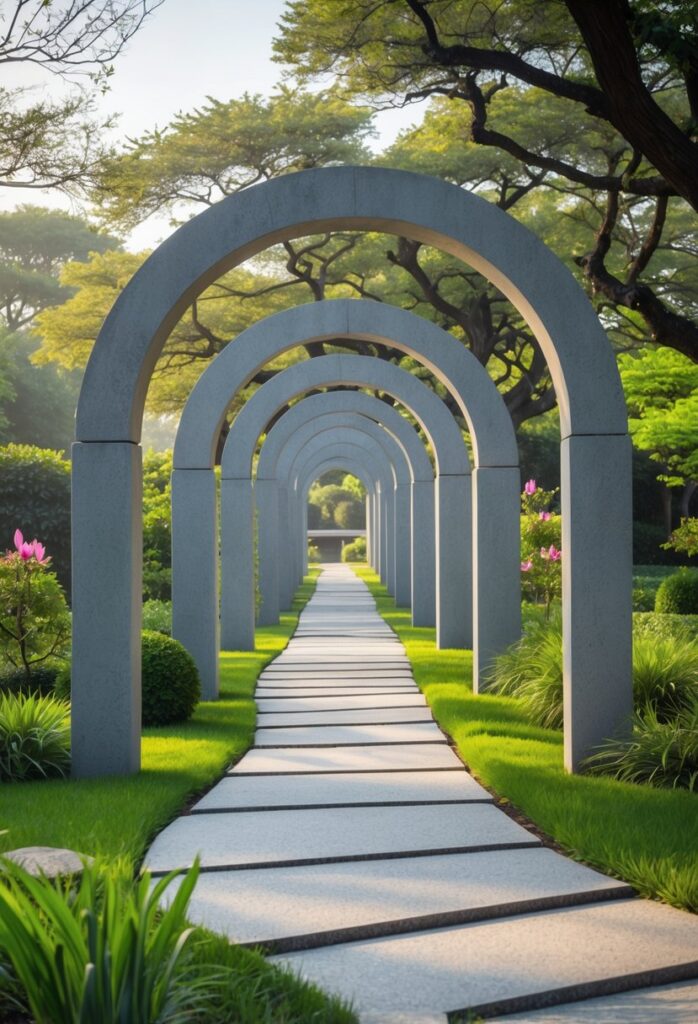
Stone moon gates are a popular choice for creating a calm and peaceful garden space. Their natural look blends well with outdoor settings, providing a timeless feel. People often use stacked stone or carved stone in circular shapes to build these gates.
These gates usually range from 4 to 8 feet in diameter. The size makes them big enough to be a strong visual feature but not overwhelming. Stone moon gates suggest stability and groundedness, helping to create a tranquil atmosphere.
Many designs mimic ancient or primitive stonework, giving a sense of history. Some moon gates are made from split stone slabs, which resemble prehistoric monuments. This style adds both serenity and a hint of mystery to the garden.
Stone moon gates can stand alone or be part of a larger landscape. They work well with plants growing around or through them, which adds softness to the hard stone edges. Combining stone with vines or flowers can enhance the peaceful mood.
For ideas on stone moon gates that promote serenity, see the collection of 35 Stunning DIY Garden Moon Gate Ideas.
3) Wooden Moon Gates with Natural Finish
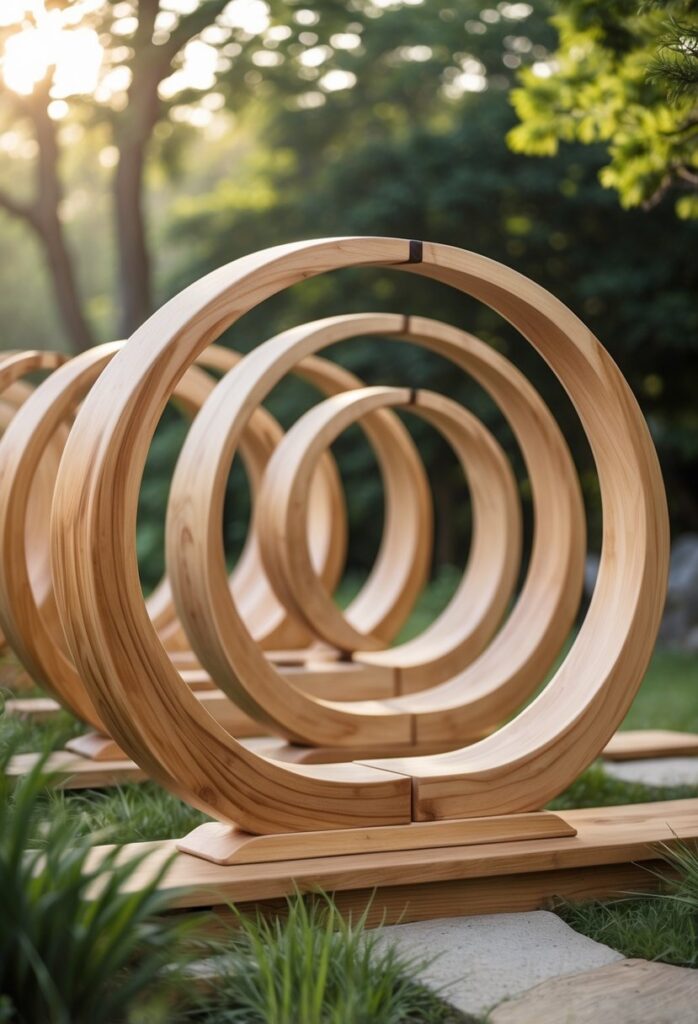
Wooden moon gates with a natural finish bring warmth and charm to outdoor spaces. They often use untreated or lightly treated wood to keep a raw, organic look. This style fits well in gardens aiming for a relaxed and earthy vibe.
These gates age gracefully over time, developing unique textures and colors from weather exposure. Their simple design makes them low maintenance, ideal for gardeners who want beauty without much effort.
Natural wooden moon gates can blend with climbing vines or plants. This adds softness and enriches the garden’s natural feel. The gates can create a smooth transition between different garden areas, framing views without overwhelming the space.
Many prefer wooden moon gates for their DIY potential. They are easier to build or customize than stone or metal versions. For ideas on maintaining style and functionality, see wooden moon gate inspiration and tips online. For a range of designs and ideas, check this page on wooden moon gate garden ideas.
4) Brick Moon Gates Featuring Floral Accents

Brick moon gates offer a classic, sturdy look that blends well with many garden styles. Their warm, earthy tones create a welcoming entrance. Adding floral accents enhances the design by softening the hard lines of brick with natural colors and shapes.
Flowers can be planted around the base or trained to climb over the arch. This mix of brick and blooms creates a charming contrast. It also draws attention to the circular form, making the gate a focal point in the garden.
Common flowers used include climbing roses, jasmine, and wisteria. These plants add fragrance and seasonal color. They also contribute to a peaceful atmosphere near the moon gate.
Combining brick with flowers balances durability and beauty. It gives the gate both structure and life, appealing to gardeners who want a blend of form and nature. For ideas and examples of designs like this, see brick moon gate gardens featuring floral accents.
5) Moon Gate Trellis Arbors for Year-Round Appeal
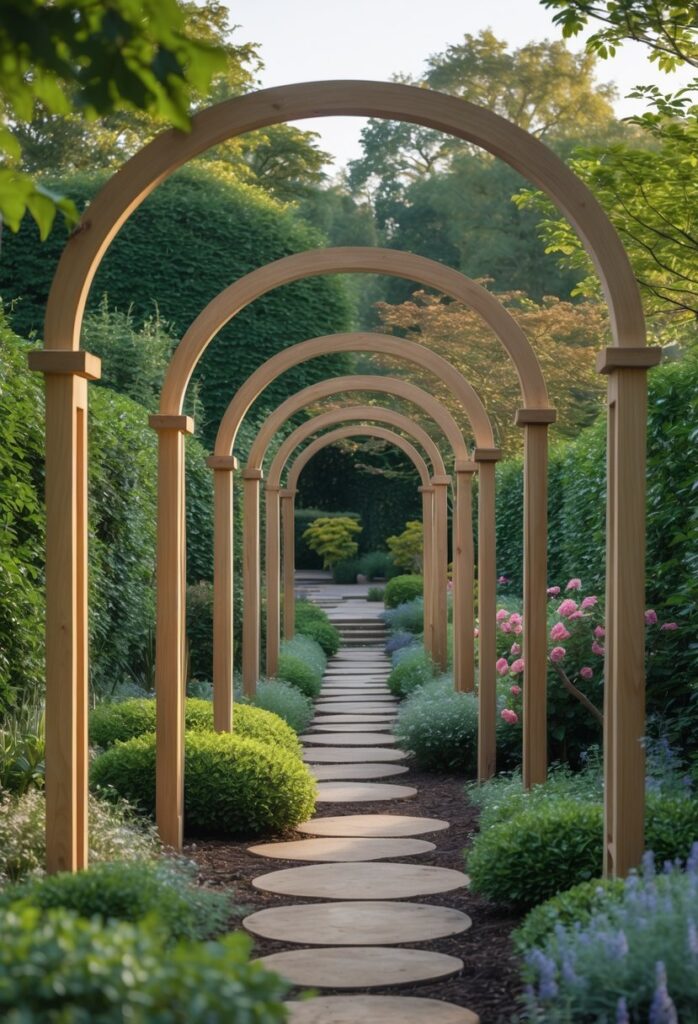
Moon gate trellis arbors add structure and beauty to gardens throughout the year. They provide a unique frame for climbing plants like roses and clematis in warmer months. These vines create a colorful and inviting entrance.
In colder seasons, the shape of the moon gate still draws attention. Even without leaves or blooms, the circular design adds interest to the garden space. Gardeners often use string lights around the frame to enhance its look during darker months.
The trellis part supports plant growth and helps keep vines healthy. This keeps the garden looking neat and organized. These arbors work well with many garden styles and can highlight a focal point like a sculpture or water feature.
Moon gate trellis arbors are also made from durable materials, ensuring they last through changing weather. Their combination of function and aesthetics makes them a popular choice for gardeners wanting an elegant, year-round feature. For more details, see moon gate trellis arbors for garden design.
6) Moon Gates as Garden View Frames

Moon gates act as natural frames within a garden. Their circular shape draws attention to specific views beyond the gate. This encourages visitors to look through and appreciate a carefully planned scene.
They often highlight a special feature like a pavilion, a water fountain, or a cluster of plants. By framing the view, the moon gate turns a simple garden path into a moment of focus and calm.
The design can be made from stone, wood, or even plants, blending well with the garden’s style. This framing effect adds depth and interest to outdoor spaces without overwhelming them.
Using a moon gate as a view frame also creates a sense of passage. It signals entering a different area or atmosphere within the garden. This adds a gentle surprise for those walking through.
For more ideas on how moon gates highlight views, see 20 moon gates that transform your garden into a dreamy oasis.
7) DIY Moon Gate Projects with Natural Materials

DIY moon gate projects often use natural materials like wood, stone, or branches. These materials blend well with garden surroundings and create a calm, organic look.
One popular method is building a moon gate from intertwined branches. This style gives the gate a rough, natural texture that fits well in woodland or rustic gardens. It is fairly simple and budget-friendly.
Wood and stone are also common choices. Wood can be shaped into smooth circular arches. Stone adds durability and a classic feel. Both materials can be combined with plants for extra charm.
Using reclaimed materials helps keep costs low and reduces waste. It also allows for unique designs, as materials may have different shapes and textures.
Natural materials do not require heavy maintenance if properly treated. They can age gracefully, adding to the character of the garden over time.
More ideas and tips for DIY moon gates made with natural materials are available at farmsunseed.com’s DIY Garden Moon Gate Ideas.
8) Moon Gates Symbolizing Cyclical Life
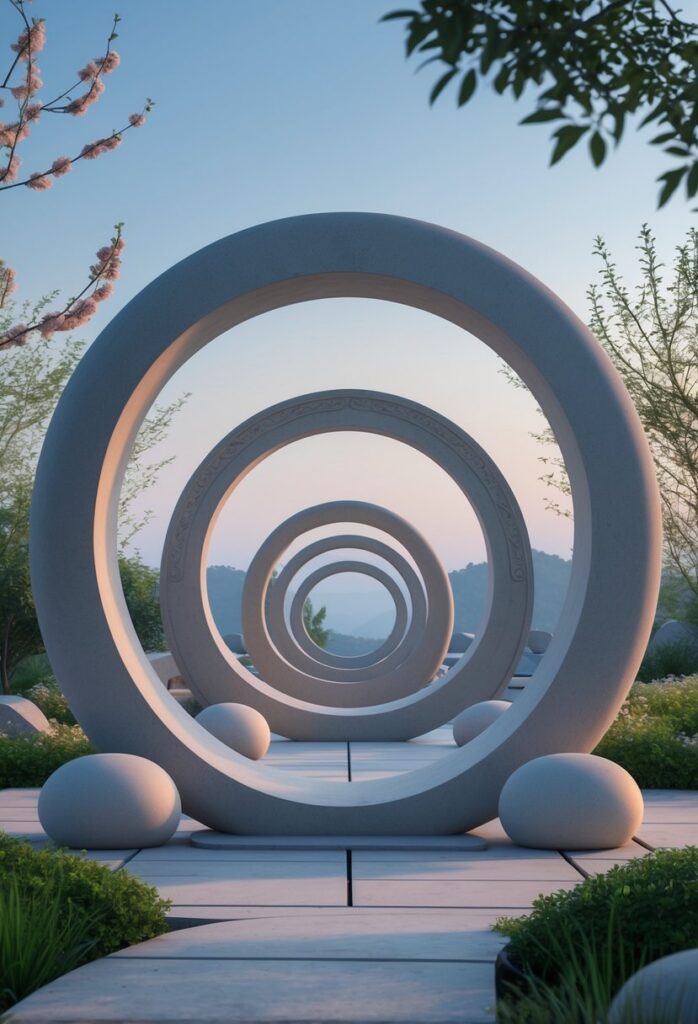
Moon gates are often seen as symbols of the cycle of life. Their round shape represents continuity, with no clear beginning or end. This reflects the natural flow of birth, growth, death, and renewal.
In many cultures, the circle is linked to balance and harmony. The moon gate’s shape mirrors the full moon, which symbolizes change and the passage of time. This connection reminds people to accept life’s constant shifts.
The gate can also represent transitions. Walking through a moon gate is like moving from one phase of life to another. It encourages embracing new opportunities while acknowledging past experiences.
In Chinese tradition, moon gates express harmony between heaven and earth. They highlight how life’s cycles are part of a greater, balanced system. This idea supports the value of patience and growth over time.
For those who add moon gates to gardens or homes, the symbol serves as a daily reminder. It shows that life is ever-changing, inviting a peaceful and open attitude toward all stages. See more about this spiritual meaning of the moon gate.
Origins and Symbolism
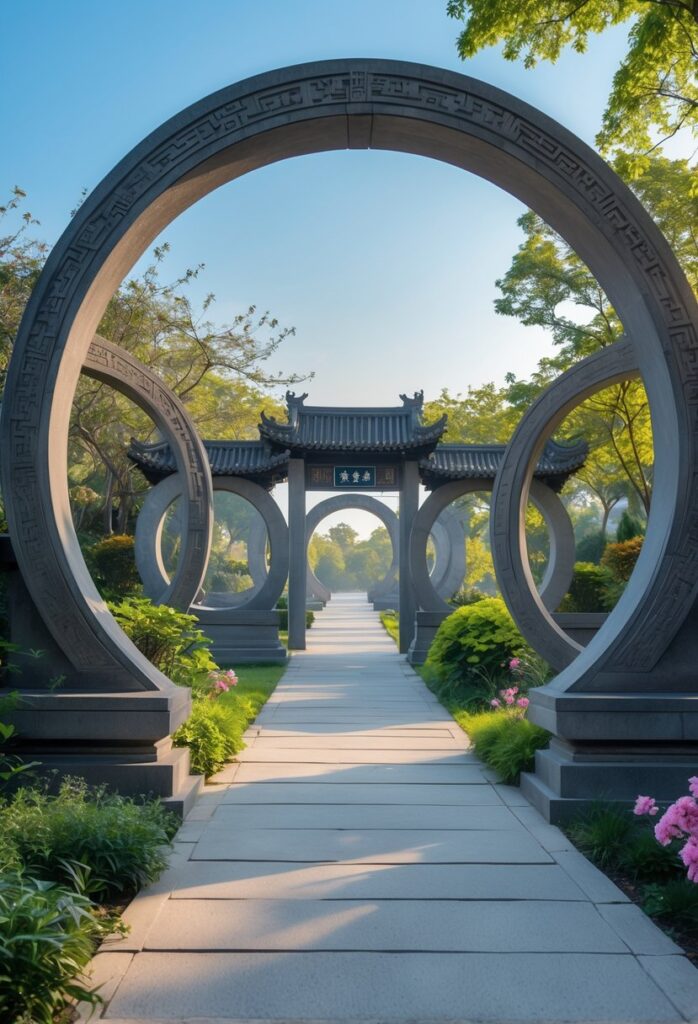
Moon gates have a rich history rooted in ancient architecture and culture. Their design and meaning connect deeply to traditions, beliefs, and the natural world. These gates are more than just entrances; they carry stories and symbolism that add depth to their beauty.
Historical Roots
Moon gates originated in ancient Chinese gardens as circular openings in walls. They were meant to frame views and create smooth transitions between spaces. This architectural feature spread throughout East Asia and later inspired designs worldwide.
Historical moon gates often included tiled roofs shaped like a half-moon, which linked the gate to lunar cycles. The moon has long been important in Chinese culture, serving as a basis for the calendar and symbolizing time, health, and renewal.
Such gates were not only practical but also artistic elements that enhanced gardens. They invited visitors to walk through peaceful, harmonious spaces.
Cultural Significance
In China, moon gates are traditional symbols of good fortune and harmony. They often mark significant areas in public and private gardens, connecting human life with nature. They promote balance and positive energy flow, especially in feng shui.
Beyond China, moon gates have taken on local meanings. In Bermuda, for example, moon gates are believed to bless couples who pass through together. In many cultures, the circular shape of the gate represents unity and completeness, reflecting a connection to family and community life.
These gates are also used to frame scenic views or seasonal changes, adding a spiritual and practical dimension to landscape design.
Symbolic Meanings
The circular form of moon gates symbolizes wholeness and the cyclical nature of life. It represents unity, connection, and harmony with the surrounding environment.
Moon gates serve as a passage between different worlds—inside and outside, past and future. This transitional role often symbolizes new beginnings or moving from one life phase to another.
They are linked to prosperity, good luck, and blessings, especially in Chinese tradition. The gate’s shape mirrors the full moon, which stands for completeness and family cohesion.
Some believe moon gates can also invite positive energy and spiritual balance into the space they adorn.
For more details on their symbolism and role in gardens, see the article on the symbolism and functionality of moon gates.
Construction and Design Elements
Moon gates vary widely in materials, shapes, and styles. Their design often reflects both practical needs and aesthetic goals. Careful selection of components and placement helps ensure the gate fits its environment and lasts long.
Traditional Building Materials
Moon gates are usually built from durable, natural materials. Stone and brick are common choices, providing strength and a timeless look. These materials can be shaped into smooth, circular arcs needed for the gate.
Wood offers warmth and flexibility. Wooden moon gates often include trellis features that support climbing plants. Metal, such as iron or steel, is sometimes used for a modern or industrial feel. Lightweight options like PVC or bamboo can suit DIY projects where ease of assembly is key.
Material choice depends on climate, budget, and style preference. Proper treatment and maintenance keep a gate functional and attractive.
Architectural Styles
The design of a moon gate often follows distinct architectural traditions. Classical Chinese gardens feature carved stone gates with round openings symbolizing harmony and unity. These strongly reflect cultural values.
Modern versions emphasize clean lines and minimal ornamentation. Some combine metal frames with natural elements like flowering vines. Rustic gates may use rough-hewn wood or repurposed farm materials for a countryside feel.
Key design traits include perfect circles or slightly flattened arcs. The height and width are set to allow comfortable passage and pleasing proportions. Decorative details include lattice work or carved patterns.
Integration Into Garden Landscapes
Moon gates serve as focal points and passageways within garden layouts. Their circular shape frames views and creates a sense of entry or transition. Placing a gate where paths meet or near scenic spots guides visitors.
Surrounding planting enhances the effect. Climbing plants, such as roses or vines, soften hard materials and add seasonal color. Borders of low shrubs or flowers can highlight the gateway.
Designers often align moon gates with sight lines to draw attention deeper into the garden. Lighting can further emphasize the shape at night. Positioning considers sun exposure and weather to protect the gate’s materials and maintain visual impact. For examples and ideas, see 35 Stunning DIY Garden Moon Gate Ideas.
Frequently Asked Questions
Moon gates can be built using different materials, from simple sticks to stone. Their cultural meaning varies by region, and they are used to create harmony and frame garden views. Some moon gates come as kits, while others are handcrafted or purchased from garden specialists.
How can I construct a moon gate using simple materials like sticks?
Building a moon gate with sticks involves creating a circular frame by bending flexible branches or bamboo. The frame is secured with twine or wire and anchored into the ground. Adding climbing plants can enhance the natural look and provide stability.
What are the essential steps for building a stone moon gate?
Stone moon gates require a sturdy foundation and well-cut stones shaped into a circle. Often, a wooden frame supports the stones during construction. Mortar binds the stones, and careful placement ensures balance and durability.
Where can one find moon gates available for purchase?
Moon gates can be found through specialty garden centers, online marketplaces, or custom landscape designers. Some suppliers offer premade wooden or stone gates suitable for private gardens. Searching for “garden moon gates for sale” helps locate vendors.
What are the cultural significances of moon gates in landscaping?
In Chinese gardens, moon gates symbolize good luck, harmony, and blessings. They often serve as a threshold between spaces and frame scenic views. The circular shape represents unity and the moon, connecting nature and spirituality.
What is the traditional use of a Japanese moon gate?
Traditional Japanese moon gates, like their Chinese counterparts, mark transitions in gardens. They guide visitors into quiet, contemplative spaces and highlight seasons. Their design is usually simple, emphasizing balance and natural materials.
Are there ready-to-assemble moon gate kits, and where to find them?
Yes, kits for moon gates made from wood or metal are available online and in garden stores. They come with pre-cut parts and instructions for easy assembly. Searching for “DIY moon gate kits” can provide options tailored to different garden styles.
